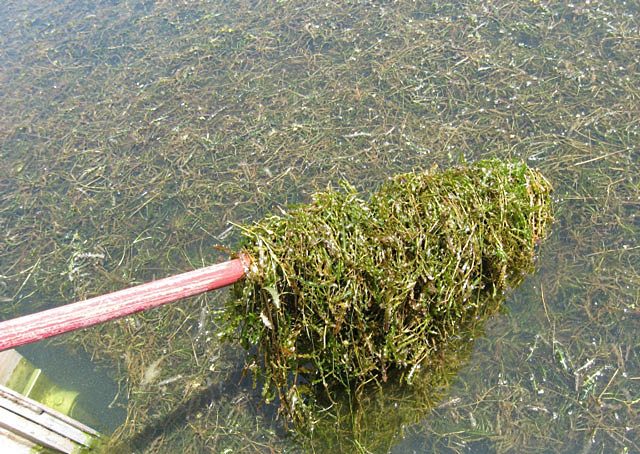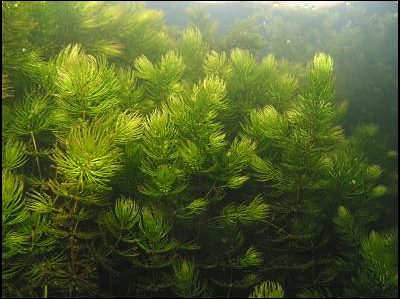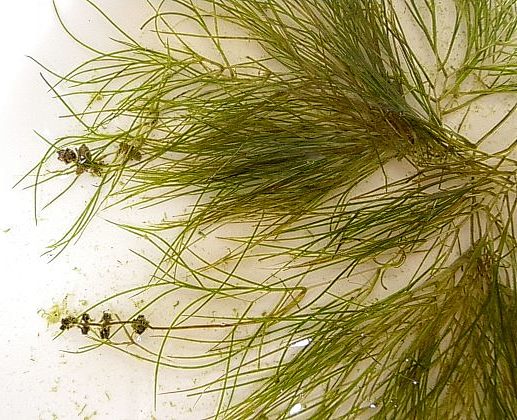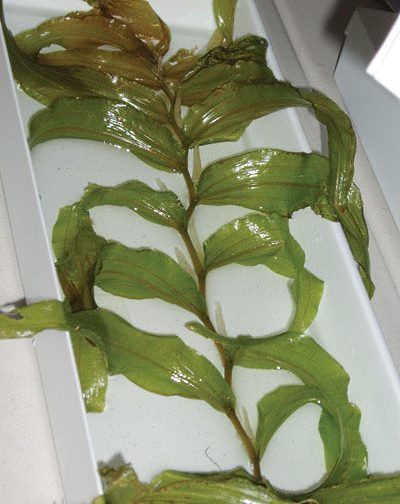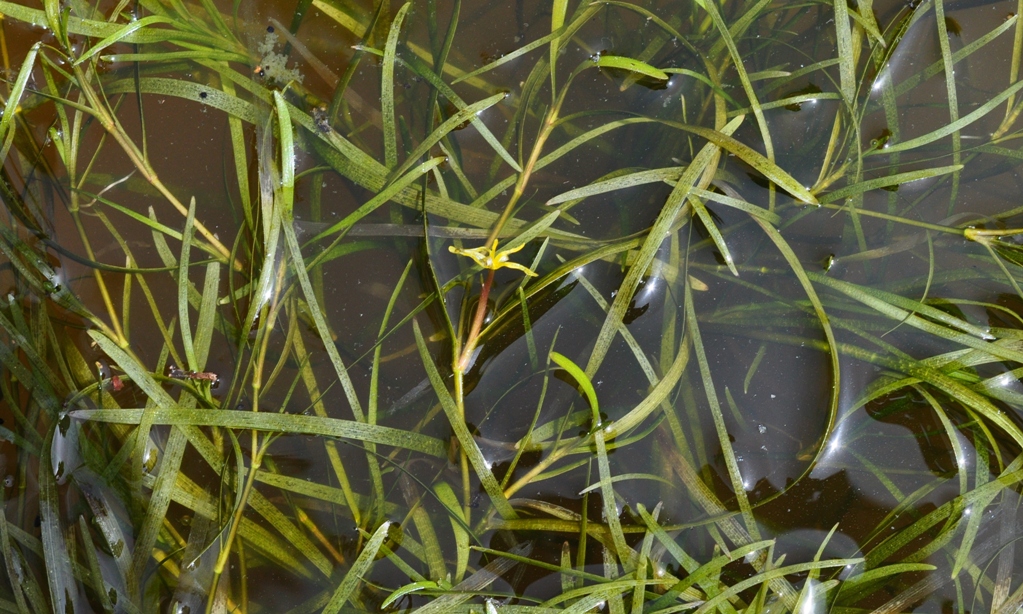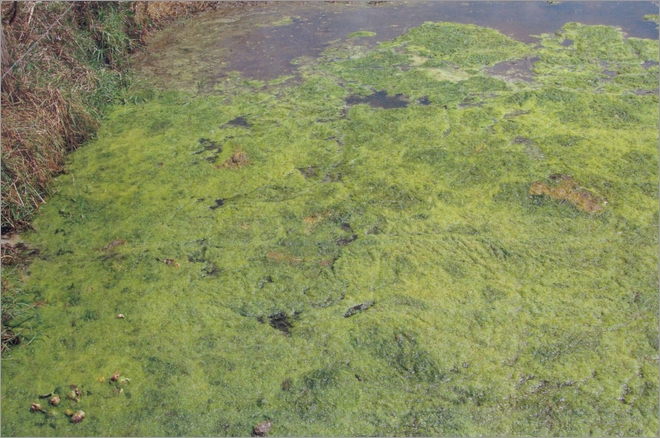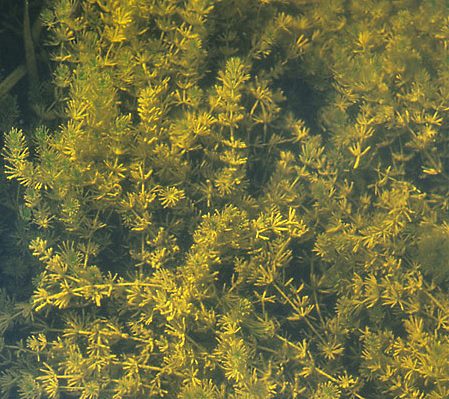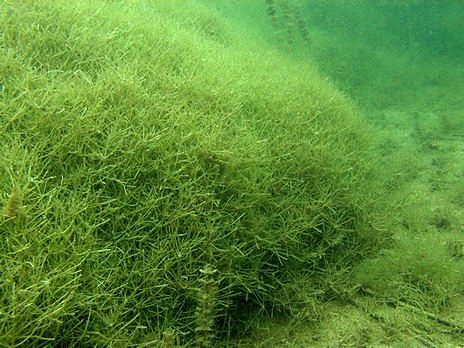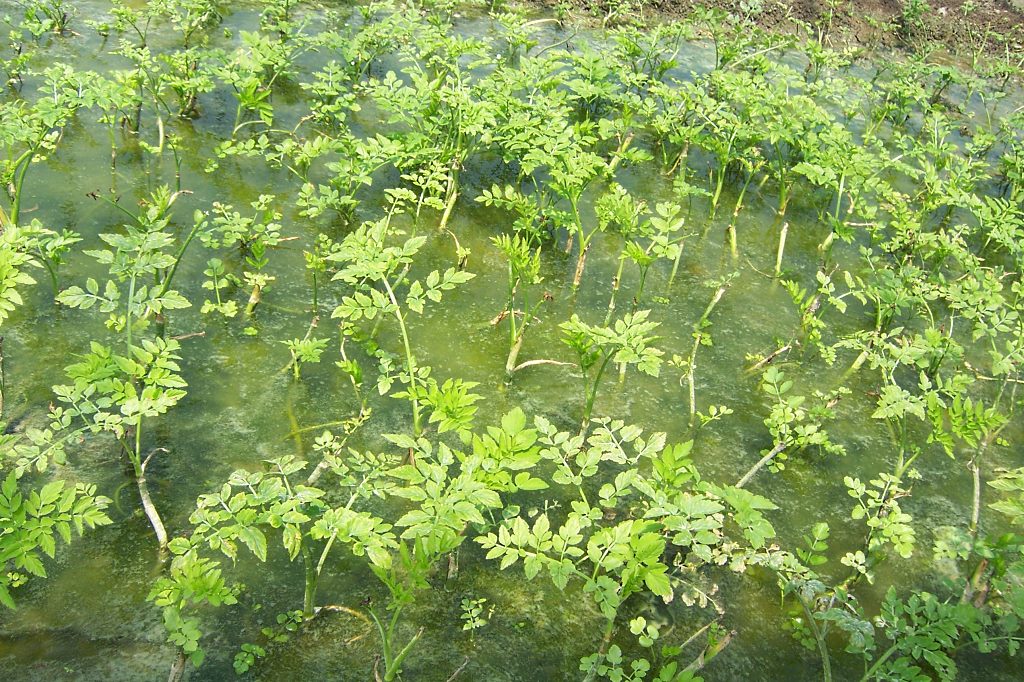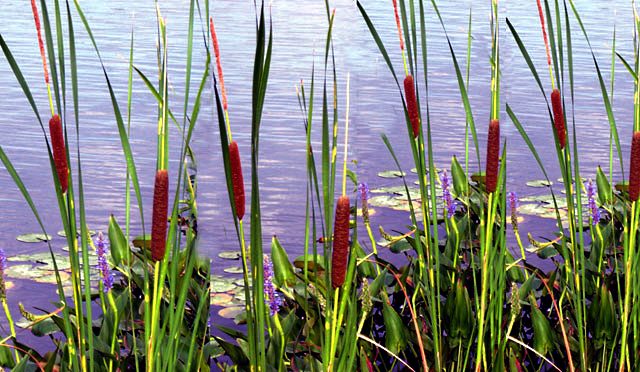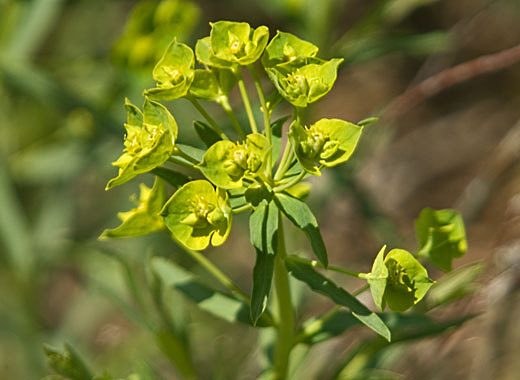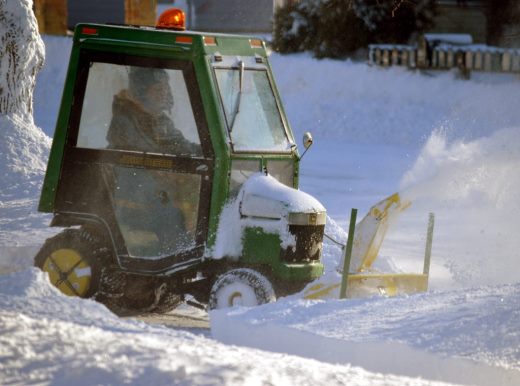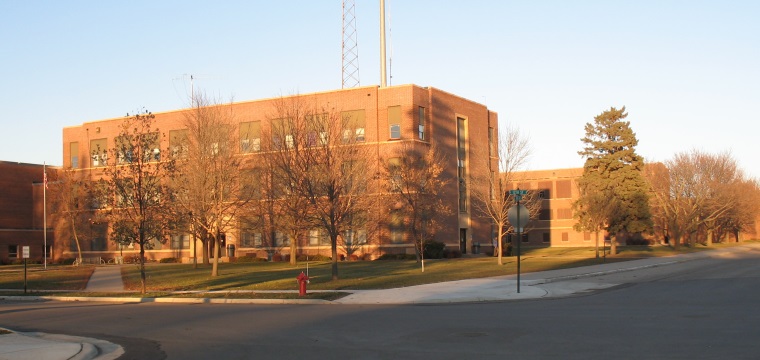MN DNR releases aquatic vegetation survey conducted last May
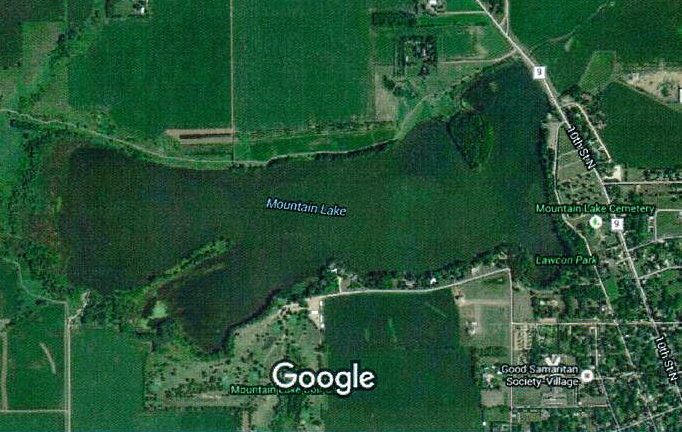
At the Monday, January 11 meeting of the Lake Commission, the results of the 2015 Aquatic Vegetation Survey of Mountain Lake were released. (For a complete report on the Lake Commission meeting, go to: http://www.cross-countiesconnect.com/2016/01/lake-commission-to-turn-on-aeration-system/)
In this article, a “deeper dive” will be taken into the report, collected by the Invasive Species Program-Division of Ecological and Water Resources of the Minnesota Department of Natural Resources (MN DNR). The observers of the survey, completed on May 20. 2015, were Allison Gamble, Invasive Species Specialist, along with summer intern, April Londo, both of the MN DNR.
After the area’s original Mountain Lake was drained in 1906, there was no lake in Mountain Lake for nearly three decades. The current Mountain Lake was built by the Work Progress Administration (WPA) during the New Deal days, with the Federal Government sharing the cost with state and local governments. In 1937, WPA workers began building a nine-foot earthen dam to create the man-made lake, along with the outlet dam and road. An island made the lake complete. Much of the dirt was removed by wheelbarrows. After the dam was finished, the wait was on to see how much it would rain – and much water the springs in the area would donate to the cause. Work was completed in 1938, and the road first put to use.
This “new” Mountain Lake is a 220-acre lake with a maximum depth of eight feet, which classifies the entire lake as littoral – areas of water depth between zero to 15 feet, where aquatic plants are most likely to grow.
According to a 2014 survey from the Minnesota Pollution Control Agency (MPCA), Mountain Lake is a nutrient-rich lake, based on its Trophic State Index (TSI) of 64. (The TSI is sometimes used to make a rough estimate of a body of water’s biological condition. The primary determining factors of a body of water’s TSI are the quantities of nitrogren, phosphorus and other biologically-useful nutrients. Increased concentrations of nitrogen and phosphorus often result in increased plant growth.) While the lake has historically had abundant submerged vegetation, it has not sported a high species diversity.
With its TSI of 64, Mountain Lake is classified as an eutrophic body of water with high biological productivity. Due to the excessive amounts of the nutrients nitrogen and phosphorus, the lake is able to support an abundance of aquatic plants. With aquatic plants dominating, the water tends to be clear. Occasionally, an excessive algal bloom does occur that can ultimately result in fish kills due to respiration by algae and bottom-living bacteria.
The aquatic vegetation survey used the point-intercept method. Survey points were placed 91 meters apart across the lake using a Geographic Information System (GIS). This spacing allowed for 110 placement points. Plant samples were collected by throwing and dragging a double-sided rake along the lake bottom at each point. These plant samples were assessed on the boat to determine species and density. (On a scale of zero – no plants to 4 – dense, often matted on the surface). How often a plant species was found in the lake was calculated based on the littoral zone (the portion of the lake less than 15 feet in depth).
Plants were observed at the deepest sampling – 6.8 feet – and at a minimum depth of 1.3 feet – but the majority of plants were at a depth between three- and four-feet.
Six native plant species were documented during the 2015 survey – along with one invasive species – curly-leaf pondweed. Curly-leaf pondweed and coontail were the most common plant species detected.
Curly-leaf pondweed was found at 79% of the 110 placement points. In many of those locations, the curly-leaf pondweed had reached the surface of the lake and matted out. Curly-leaf pondweed was found throughout the entire lake, but was most often and at highest density at the center of lake. During an earlier 2009 survey, curly-leaf pondweed was found more on the lake’s perimeter, rather than in the center.
Curly-leaf pondweed is a rooted, submerged plant that quickly forms dense mats at the water surface of lakes and rivers in late spring and early summer. In late fall and early winter, it sprouts from rhizomes and turions (overwintering buds) shading out later-growing native plants. These mats interfere with boating, fishing, waterfowl hunting and swimming.
Native to Eurasia, Africa and Australia, curly-leaf pondweed was first discovered in North America in the mid-1880s. By 1978, it had spread across most of the United States and Canada. It spreads by seeds, rhizomes, turion, and plant pieces that break off and float on water currents. It can also be spread overland to new bodies of water by clinging to watercraft, trailers and equipment.
While curly-leaf pondweed provides some cover for fish, and several waterfowl species feed on the seeds and diving ducks often eat the winter buds, the pondweed causes problems due to excessive growth. Summer die-offs can form windrows of decaying plants onshore, sometimes followed by algal blooms. At that point, curly-leaf pondweed displaces native plant communities and decay can deplete oxygen levels, leading to fish kills and negative impacts on other aquatic life.
Eradicating established curly-leaf pondweed infestations is nearly impossible.
From 2000 to 2012, the City of Mountain Lake used herbicides to control the curly-leaf pondweed. From 2012 to now, mechanical harvesting to cut and remove up to 100 acres of curly-leaf pondweed per year has been relied on for control.
Coontail was also found concentrated in the center of the lake. Native pondweeds, including sago pondweed and clasping leaf pondweed, along with water stargrass, were found infrequently around the edges of the lake. Filamentous algae, Muskgrass, Stonewort and water celery were also observed. No floating leaf species were found, but one emergent species – cattails – was found around the lake’s western shoreline. Cattails have been documented at that location since the 1990s.
Leafy spurge, a terrestrial invasive species – a noxious weed – was seen growing in low densities on the point on the northeast shoreline.
This aggressive, long-lived perennial was imported with contaminated seed from Eurasia around 1827. Leafy spurge was first recorded in Massachusetts, but spread quickly and reached the western United States by the early 1900s.
Leafy spurge produces somewhat woody stems – up to three-feet tall – with 1-to-4 inch-long leaves. Flowers, surrounded by yellow bracts, are grouped in clusters at the tops of shoots, or scattered along the stem. Each flower develops a capsule containing three seeds. These capsules open explosively when it is hot and the capsules are dry, dispersing seed up to 15 feet from the parent plant. Seed may remain viable for five-to-eight years in the seedbank. Leafy spurge has extensive rhizomes and roots that send up shoots from deep in the soil. Roots can penetrate as far as 15-30 feet, but most reach about eight feet below the surface.
Leafy spurge is an aggressive invader with stubborn persistence due to its vigorous roots and rhizomes. With a leafy spurge invasion, the diversity of native plants is reduced. In addition, it displaces more valuable livestock and wildlife forage, and the milky sap is poisonous to cattle and other wild animals.
Leafy spurge is regulated by the Minnesota Department of Agriculture and County Agriculture inspectors. Moths, flies, beetles, and fungi are being use for biological control, with some success. Season-long grazing by goats and sheep (who are able to eat the weed) may help control leafy spurge. Repeated herbicide application is also effective against leafy spurge. Multiple treatments are necessary every year for several years, making large infestations expensive to treat. Weed-free feed should be used. Soil and gravel from infested areas should not be transported to other sites.
The final survey taken of Mountain Lake were Seechi disk observations. These observations were at a depth of two feet. (A Seechi disk is a circular plate divided into quarters – painted alternately black and white. The disk is attached to a rope and lowered into the water until it is no longer visible. Seechi disk depth, then, is a measure of water clarity – or clearness.) Water clarity during the summer has averaged around three feet.
Following is a DNR photo gallery of the aquatic vegetation found in Mountain Lake:
